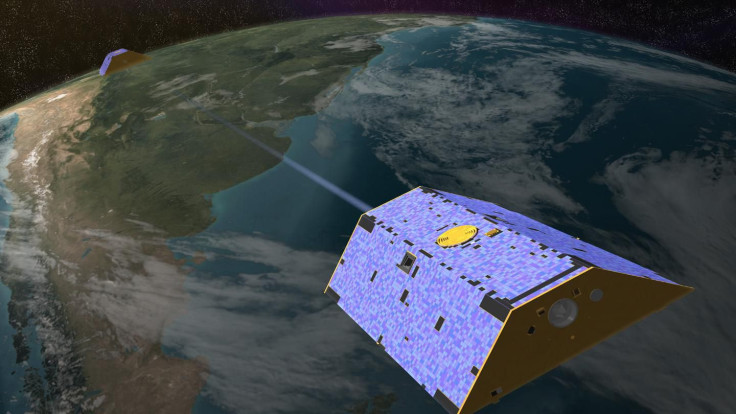NASA's Twin Mass-Measuring Satellites Will Fall To Earth Soon

NASA’s second most famous set of twins is actually a set of twin satellites that track all of the water on Earth. For the last 15 years the Gravity Recovery and Climate Experiment, or GRACE, satellites have been tracking the movement of all of the water on Earth. But they’ve reached the end of their mission and in the coming months they’ll reenter the Earth’s atmosphere.
The satellites put in work for far longer than NASA and the German Aerospace Center originally expected. The original plan was for the satellites to orbit Earth for five years following the March 2002 mission launch. During that time it mapped the Earth’s gravity field by measuring slight changes in Earth’s gravitational pull caused by the movement of mass around the planet. Usually significant movements of mass have to do with water moving around the planet.
The satellites gathered data by using several instruments for measurement. First it used a microwave ranging system to keep track of the distance between the two satellites, down to a fraction of the width of a human hair, according to NASA. Then the ranging data was then combined with GPS data for timing, while the accelerometer was used for tracking non-gravitational movements, and the stars were used for tracking altitude, according to NASA. All of this data was then used to calculate the Earth’s gravity field on a monthly basis. This then gave researchers insight into the processes by which mass moves around the Earth.
"It has advanced our understanding of the contribution of polar ice melt to global sea level rise and the amount of atmospheric heat absorbed by the ocean. Recent applications include monitoring and managing global water resources used for consumption, agriculture and industry; and assessing flood and earthquake hazards," said Byron Tapley, the primary investigator on the mission, according to NASA.
In September, the GRACE-2 satellite suffered a battery issue due to its old age. When researchers realized it didn’t have enough battery left to continue running its instruments the decision was made to end the GRACE-2’s mission. The remaining fuels is running out and the satellite has started to fall from orbit already. Reentry is expected for some time in December or January. The GRACE-1 satellite will finish out the planned maneuvers of the mission and then be retired in the early months of 2018. "NASA and the German Space Operations Center will jointly monitor the deorbit and reentry of both satellites," said a release from NASA.
© Copyright IBTimes 2024. All rights reserved.




















